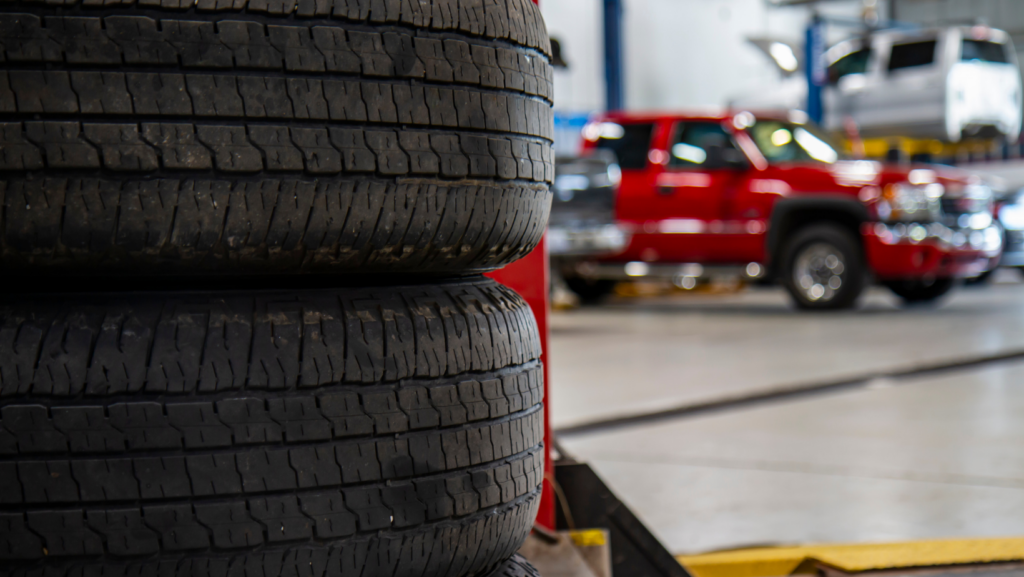
Tires are the unsung heroes of car performance and safety. They are the only part of your vehicle that touches the road, playing a crucial role in how your car accelerates, brakes, and corners. Choosing the right tires can significantly enhance your driving experience, improve fuel efficiency, and ensure your safety on the road. This article will guide you through the essentials of selecting the perfect tires for your vehicle, focusing on performance, safety, and maintenance.
Understanding Tires and Performance
Tires are a critical component of your car’s overall performance. They affect your vehicle’s handling, braking distance, and even fuel consumption. There are various types of tires for car wheels available, each designed for specific driving conditions and performance needs. For instance, performance tires offer superior grip and handling for high-speed driving, while all-season tires provide a balanced performance in various weather conditions.
Factors to Consider When Choosing Tires
Vehicle Type and Tire Compatibility
The first step in selecting the right tires is to ensure they are compatible with your vehicle’s make and model. Different vehicles have different tire requirements based on their weight, speed capabilities, and performance characteristics. For example, a sports car may require high-performance tires that can handle higher speeds and provide greater traction for sharp turns, while a compact car might be better suited to standard tires that offer comfort and fuel efficiency.
- Check the Owner’s Manual: Your vehicle’s owner’s manual will specify the size, type, and sometimes even the brand of tires recommended by the manufacturer.
- Understand Tire Codes: Tires come with codes that indicate their size, load capacity, and speed rating. Ensure the tires you choose match or exceed the specifications for your vehicle.
Driving Conditions and Tire Selection
The driving conditions you regularly encounter play a significant role in determining the best tire for your needs. Different tires are designed to perform optimally under specific conditions:
- Wet Roads: If you live in an area with frequent rain, look for tires with excellent wet grip and water evacuation capabilities to prevent hydroplaning.
- Snow and Ice: For those in colder climates with heavy snow and ice, winter tires are indispensable. They are made from a softer rubber compound that remains flexible in cold temperatures, providing better traction.
- Off-Road: If you frequently drive on unpaved roads or rough terrain, consider all-terrain tires designed with deeper tread patterns to offer better grip on uneven surfaces.
Seasonal Tires vs. All-Season Tires
Deciding between seasonal tires and all-season tires is another crucial consideration:
- Seasonal Tires: These include summer tires and winter tires, each optimized for the best performance in their respective season. Summer tires offer superior grip and handling on dry and wet roads during warm months, while winter tires provide unmatched traction in snow and ice.
- All-Season Tires: All-season tires are a compromise designed to perform reasonably well in a variety of conditions, from dry to wet to light snow. However, they may not match the performance of seasonal tires in extreme weather conditions.
Safety Considerations
Safety is paramount when it comes to tires. A good set of tires can drastically reduce braking distances and improve handling in emergency situations.

Pay attention to:
- Tread Depth: Adequate tread depth is essential for maintaining traction, especially in wet conditions.
- Tire Pressure: Proper tire pressure is crucial for optimal performance and safety. Underinflated or overinflated tires can lead to uneven wear, reduced grip, and increased risk of blowouts.
Performance Tires vs. Standard Tires
Performance Tires
Performance tires are engineered with a focus on optimizing high-speed handling, grip, and responsiveness. They are typically made from a softer rubber compound, which provides a better grip on the road surface, especially during warmer weather. This softer compound allows for more of the tire to make contact with the road, enhancing traction and allowing for sharper turns and quicker stops.
The tread patterns on performance tires are also designed to maximize road contact and water evacuation, reducing the risk of hydroplaning in wet conditions. However, the softer compound also means these tires tend to wear out faster than standard tires and may not perform as well in colder temperatures, as the rubber can become too hard and lose elasticity.
Performance tires are ideal for sports cars, high-performance vehicles, and drivers who prioritize dynamic driving experiences, including track days or spirited road use. They can significantly improve a vehicle’s handling and safety when driving at high speeds or under demanding conditions.
Standard Tires
Standard tires, often referred to as all-season tires, are designed to offer a balanced performance in a variety of driving conditions. They are made from a harder rubber compound, which provides a longer lifespan and better fuel efficiency due to reduced rolling resistance. The tread pattern on standard tires is designed to handle a range of weather conditions, from dry to wet roads and even light snow.
While standard tires may not provide the same level of grip and handling as performance tires, they offer greater versatility and durability. They are a practical choice for everyday driving, offering a comfortable ride, low noise levels, and reliability across many conditions. Standard tires are suitable for most drivers, especially those who prioritize convenience, longevity, and year-round safety without the need for specialized tires.
The Role of Tire Maintenance in Performance and Safety
Regular tire maintenance is key to ensuring your tires perform optimally and last longer. This includes regular pressure checks, tire rotations, and alignments. Knowing when to replace your tires is also critical; worn tires significantly compromise safety and performance.
Eco-Friendly and Fuel-Efficient Tires
Advancements in tire technology have led to the development of eco-friendly and fuel-efficient tires. These tires are designed to reduce rolling resistance, which in turn improves fuel efficiency and reduces carbon emissions.
Expert Tips on Choosing the Right Tires
Consulting with tire experts or your vehicle’s manufacturer can provide valuable insights into the best tires for your specific needs. They can offer recommendations based on your driving habits, vehicle type, and budget.
Conclusion
Choosing the right tires is a crucial decision that affects your vehicle’s performance, safety, and efficiency.

By considering the factors outlined in this article and conducting regular maintenance, you can ensure that your tires help you get the most out of your driving experience while keeping you safe on the road.






































